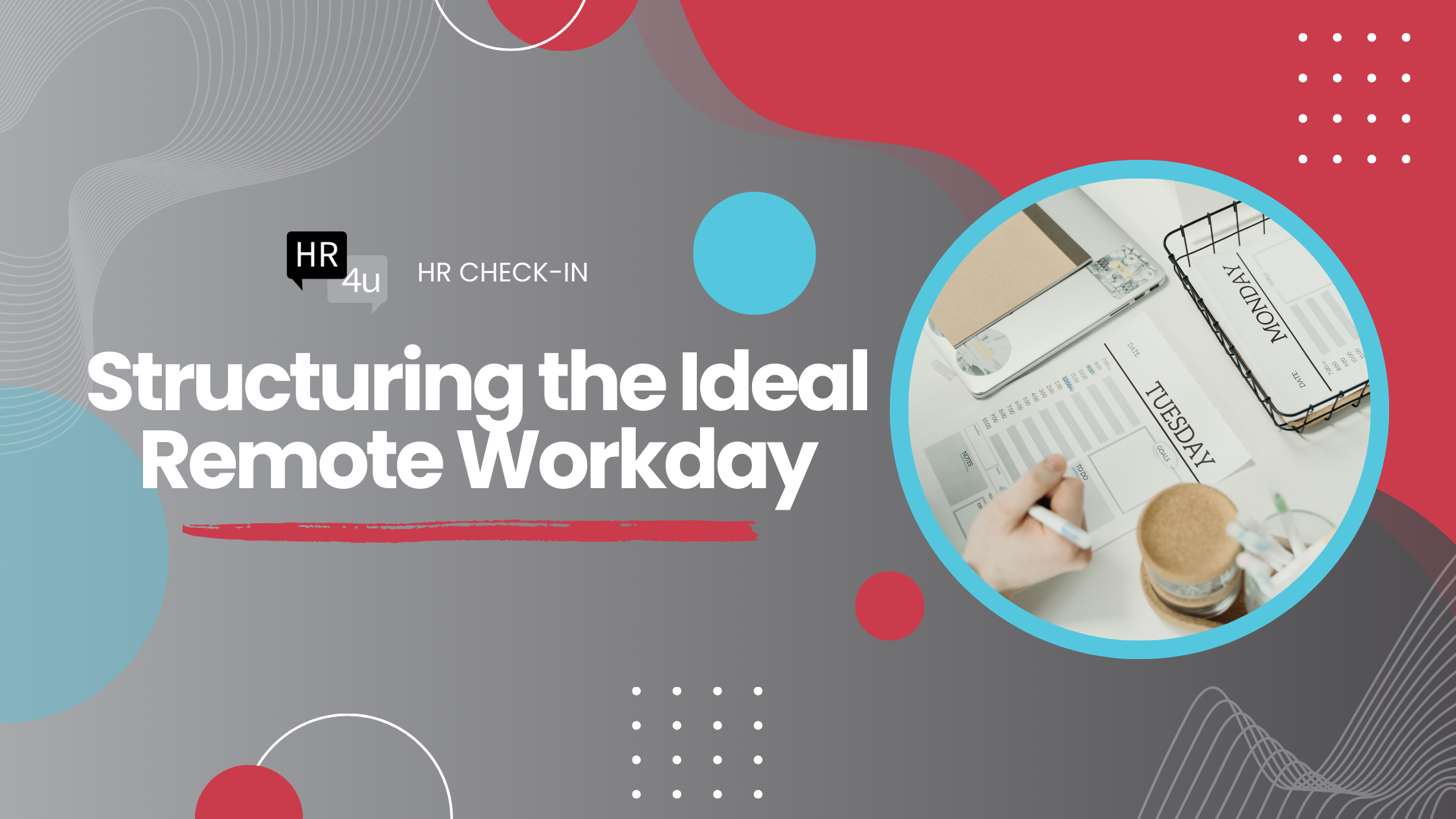In the wake of the global shift towards remote work, it’s become increasingly evident that the traditional 9-to-5 structure no longer fits the bill for many employees. For employers, managers, and HR alike, it’s crucial to understand how employees prefer to structure their remote workdays and how this preference directly impacts their work-life balance. By acknowledging and accommodating these preferences, employers can foster a more productive and fulfilling remote work environment. In today’s edition of HR Check-In, we’ll take a look at best practices of structuring the ideal remote workday.
Understanding Employee Preferences:
Every individual has unique preferences and rhythms when it comes to work. For some, starting the day bright and early is the key to productivity, while others may find their stride in the afternoon or evening. Remote work offers employees the flexibility to tailor their schedules according to their natural rhythms and personal commitments. However, this flexibility also comes with the responsibility of managing one’s time effectively.
Studies have shown that the most common preferences among remote workers include:
Flexible Hours:
Many employees appreciate the ability to customize their work hours to fit their lifestyle. Whether it’s starting early to accommodate family commitments or working late to capitalize on peak productivity hours, flexibility is highly valued.
Block Scheduling:
Rather than adhering to a strict 9-to-5 schedule, some employees prefer to organize their workday into focused blocks of time. This approach allows for deep concentration on tasks without constant interruptions.
Blend of Work and Personal Time:
Remote work blurs the boundaries between work and personal life. Some employees prefer to intersperse work tasks with personal activities throughout the day, allowing for greater work-life integration.
Regular Breaks:
Breaks are essential for maintaining productivity and preventing burnout. Employees often appreciate having the autonomy to take short breaks throughout the day to recharge and reset.
Impact on Work-Life Balance:
The way employees structure their remote workdays directly impacts their work-life balance. When employees have the flexibility to align their work hours with their personal lives, they experience reduced stress and greater satisfaction. This balance leads to higher morale, increased engagement, and improved overall well-being.
On the other hand, a lack of structure or excessive flexibility can also pose challenges. Without clear boundaries, employees may find themselves working longer hours, experiencing difficulty disconnecting from work, or struggling to maintain a routine. This can lead to burnout, decreased productivity, and diminished job satisfaction.
How Can Managers Help?
Managers play a crucial role in supporting employees as they navigate remote work and structure their workdays effectively. Here are some strategies managers can implement:
Set Clear Expectations:
Establish clear guidelines regarding work hours, availability, and communication expectations. This helps employees understand what is expected of them and fosters accountability.
Encourage Communication:
Maintain open lines of communication with remote team members to ensure they feel supported and connected. Regular check-ins can provide an opportunity to address any challenges and offer assistance as needed.
Flexibility and Trust:
Demonstrate trust in your employees by granting them the autonomy to manage their schedules responsibly. Recognize that productivity is not always tied to traditional office hours and focus on results rather than hours worked.
Promote Work-Life Balance:
Encourage employees to prioritize self-care and set boundaries between work and personal life. Encourage them to take breaks, establish a designated workspace, and disconnect from work at the end of the day.
Provide Resources:
Offer resources and support to help employees manage their time effectively. This could include training on time management techniques, access to productivity tools, or mental health resources.
It is clear that understanding and accommodating employee preferences for structuring remote workdays is essential for promoting work-life balance and fostering a positive remote work culture. By empowering employees to customize their schedules while providing support and guidance, employers and organizations can create an environment where employees thrive both personally and professionally!
If you’re looking to further discuss or have any questions about tailoring your remote work experience, don’t hesitate to reach out to HR4U.

